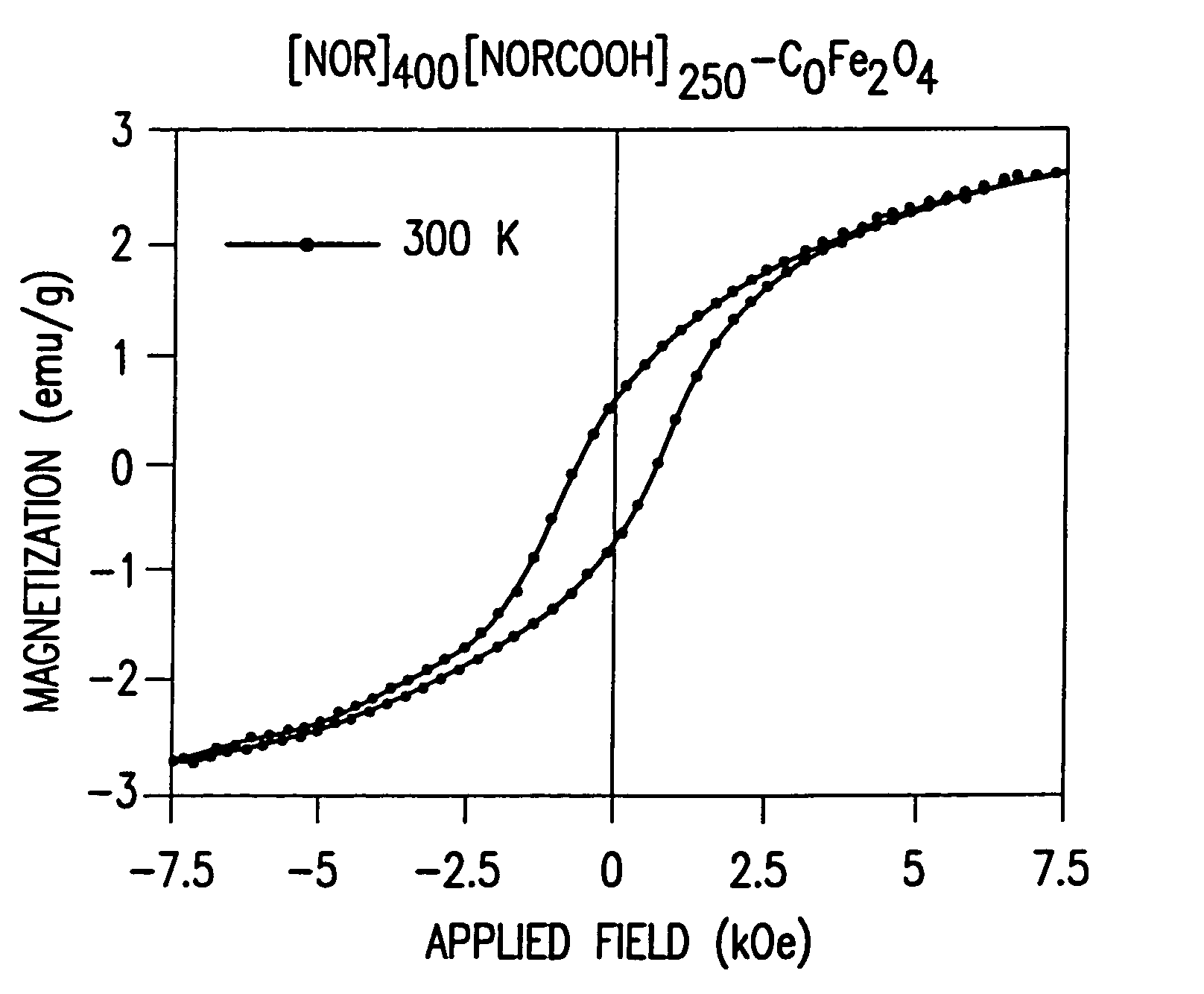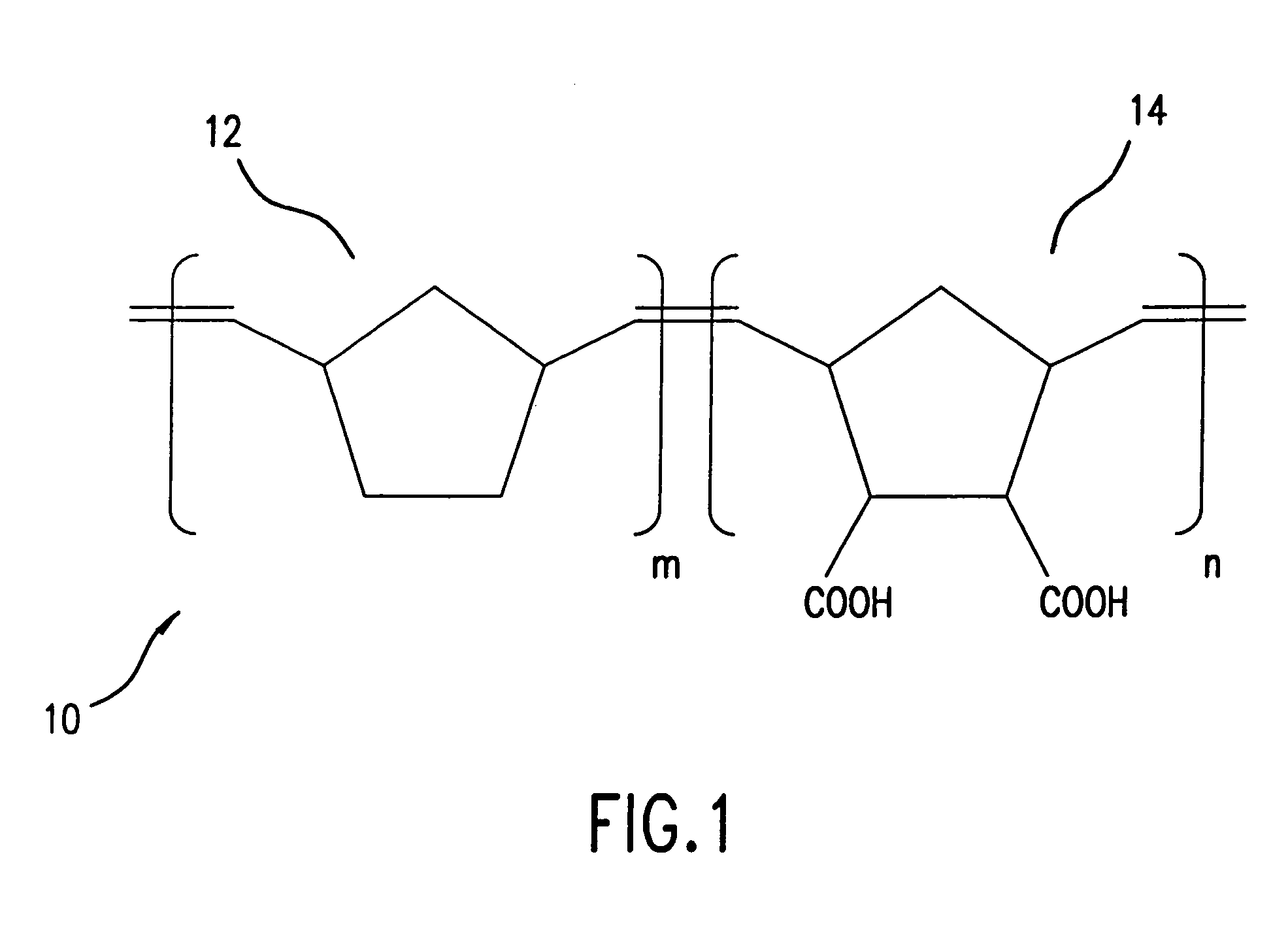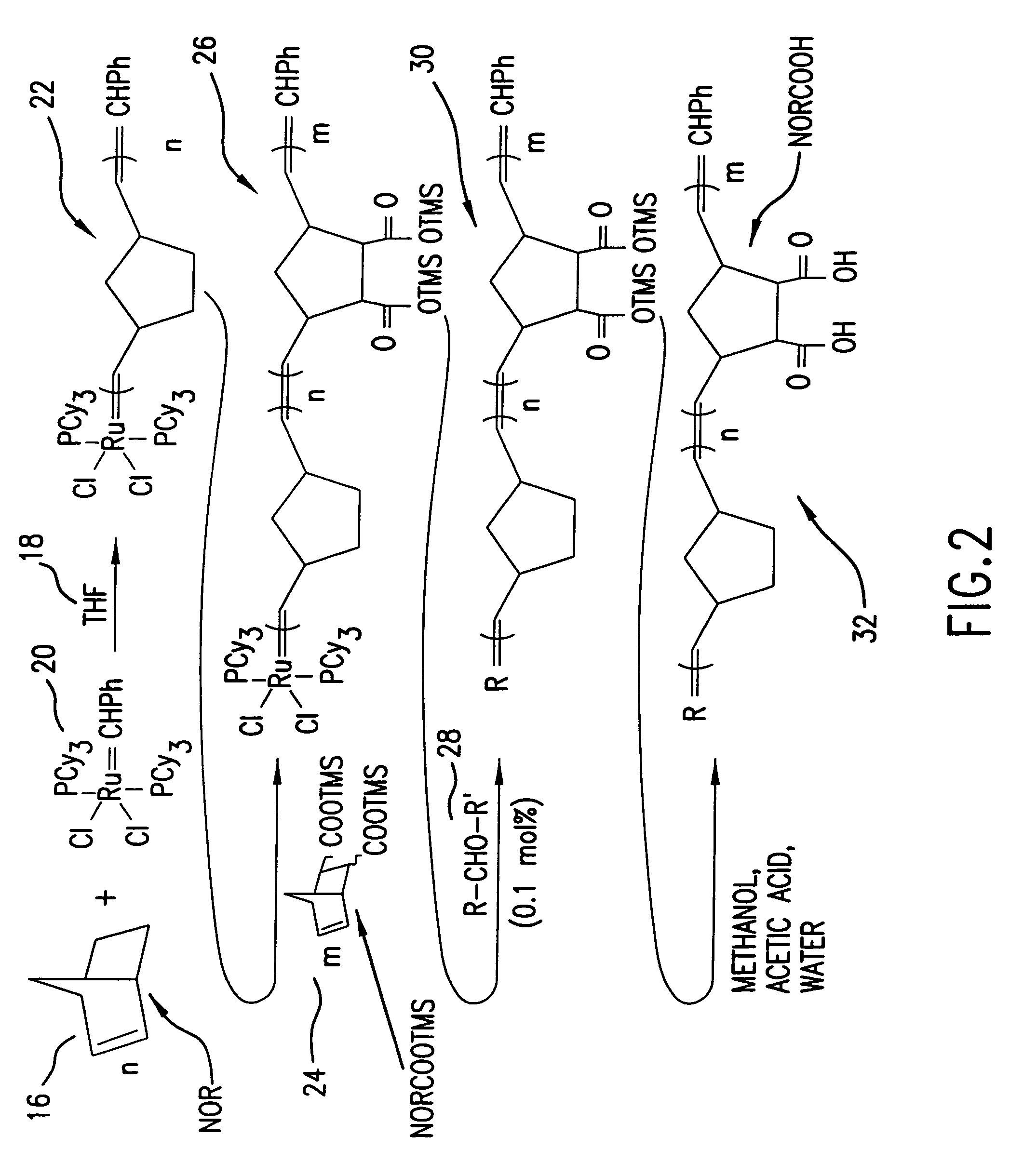Controlled room temperature synthesis of magnetic metal oxide nanoclusters within a diblock copolymer matrix
a technology of diblock copolymer and metal oxide nanoclusters, which is applied in the direction of magnetic materials, magnetic bodies, film/foil adhesives, etc., can solve the problems of substantially unsuccessful synthesis of nanoclusters other than cds and zns, and achieve the effect of improving the uniform distribution of metal containing nanoclusters
- Summary
- Abstract
- Description
- Claims
- Application Information
AI Technical Summary
Benefits of technology
Problems solved by technology
Method used
Image
Examples
Embodiment Construction
[0063]The present invention is a process of controlled room temperature synthesis of self-assembled magnetic metal(s) oxide nanoparticles within the diblock copolymer matrix. The method of the present invention uses a microphase separated diblock copolymer as a template for the formation of nanostructures, such as a single metal oxide or a multi-metal oxide. For both types of resulting product (single or multi-metal oxide nanostructures), metal(s) atoms may either be introduced to one block of a diblock copolymer as a salt when the polymer is dissolved, or to one monomer prior to the polymer synthesis. However, despite the differences in these two approaches, the overall method of room temperature synthesis of magnetic metal oxide nanoclusters within a diblock copolymer matrix of the present invention includes the following steps:[0064]synthesizing by a ring opening metathesis polymerization technique, a diblock copolymer which includes a first polymer block and a second polymer blo...
PUM
| Property | Measurement | Unit |
|---|---|---|
| Fraction | aaaaa | aaaaa |
| Fraction | aaaaa | aaaaa |
| Time | aaaaa | aaaaa |
Abstract
Description
Claims
Application Information
 Login to View More
Login to View More - R&D
- Intellectual Property
- Life Sciences
- Materials
- Tech Scout
- Unparalleled Data Quality
- Higher Quality Content
- 60% Fewer Hallucinations
Browse by: Latest US Patents, China's latest patents, Technical Efficacy Thesaurus, Application Domain, Technology Topic, Popular Technical Reports.
© 2025 PatSnap. All rights reserved.Legal|Privacy policy|Modern Slavery Act Transparency Statement|Sitemap|About US| Contact US: help@patsnap.com



